László Zsolt BORDOS
Lightforms
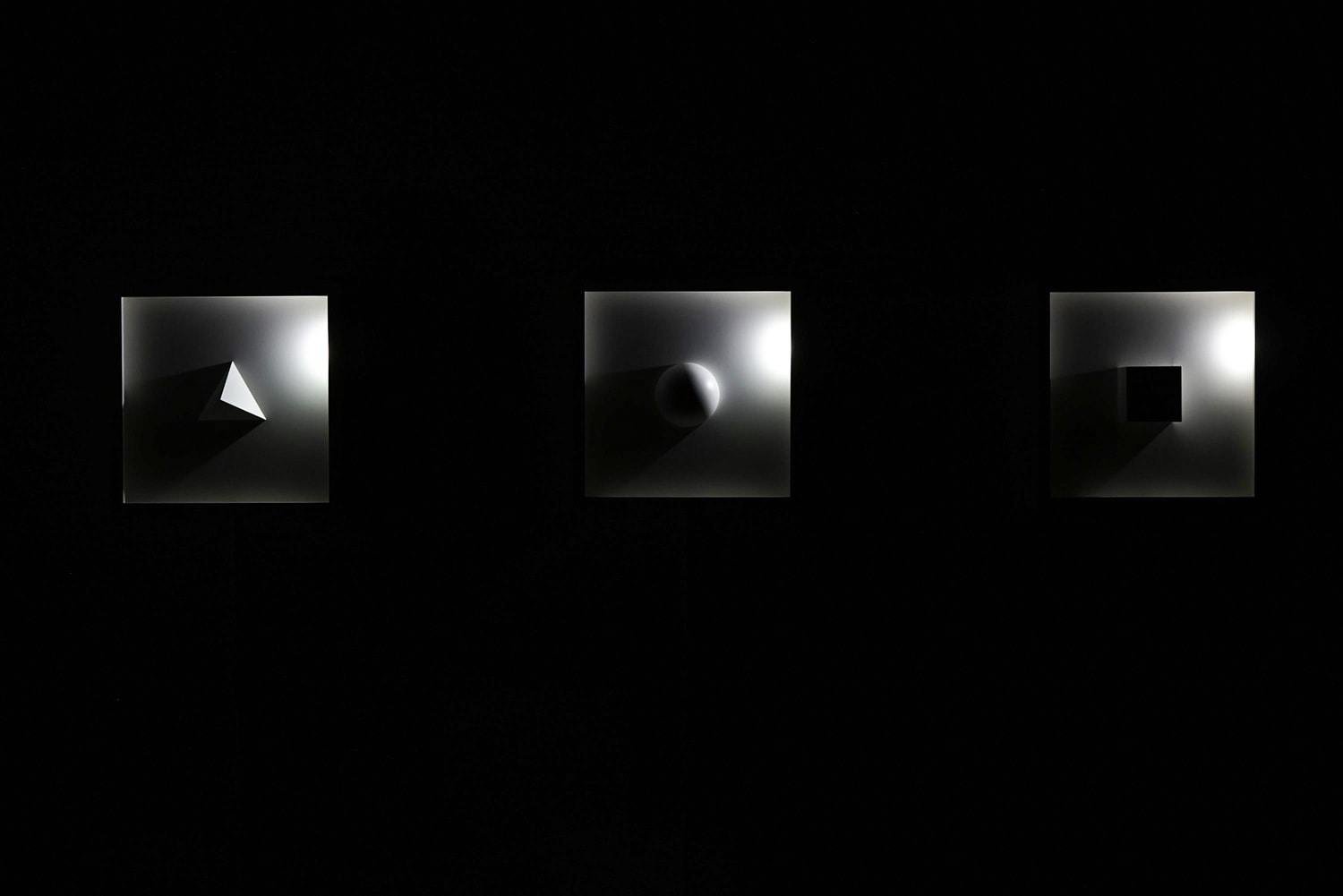
Lightforms of László Zsolt Bordos are objects that study the behavior of primary geometric shapes and the ways they are affected by the lumino-kinetic environment. The moving light source creates a continuous variable of the visual experience. With the movement of light and shadow, the geometric shapes are always brought into new light situations.
The light source moves clockwise and revolves in exactly 1 minute. The triad of the three shapes not only evokes an association of the sundial, but reminds us of the motion of the planets. Mr Bordos’ work invites visitors to a meditative experience of three-dimensional Space and Time.
Gábor KITZINGER
Geohm

The simulation is captured by 4 cameras in the virtual space of the program, which then appears in a Plexiglas pyramid, more precisely in a frustum placed in the exhibition area. The frustum „cuts” the material from another dimension and imports it into our reality in the form of a walk-around hologram.
The generative animation is controlled by the installation’s audio content, but gestures or hand movements of the observer may also interact with it, modifying the accompanying soundwaves. These gestures become the stimuli that partially break and alter the repetitive reality of the object, causing random, unpredictable events in its cyclical permanence.
András Nagy
Perception of Imagination
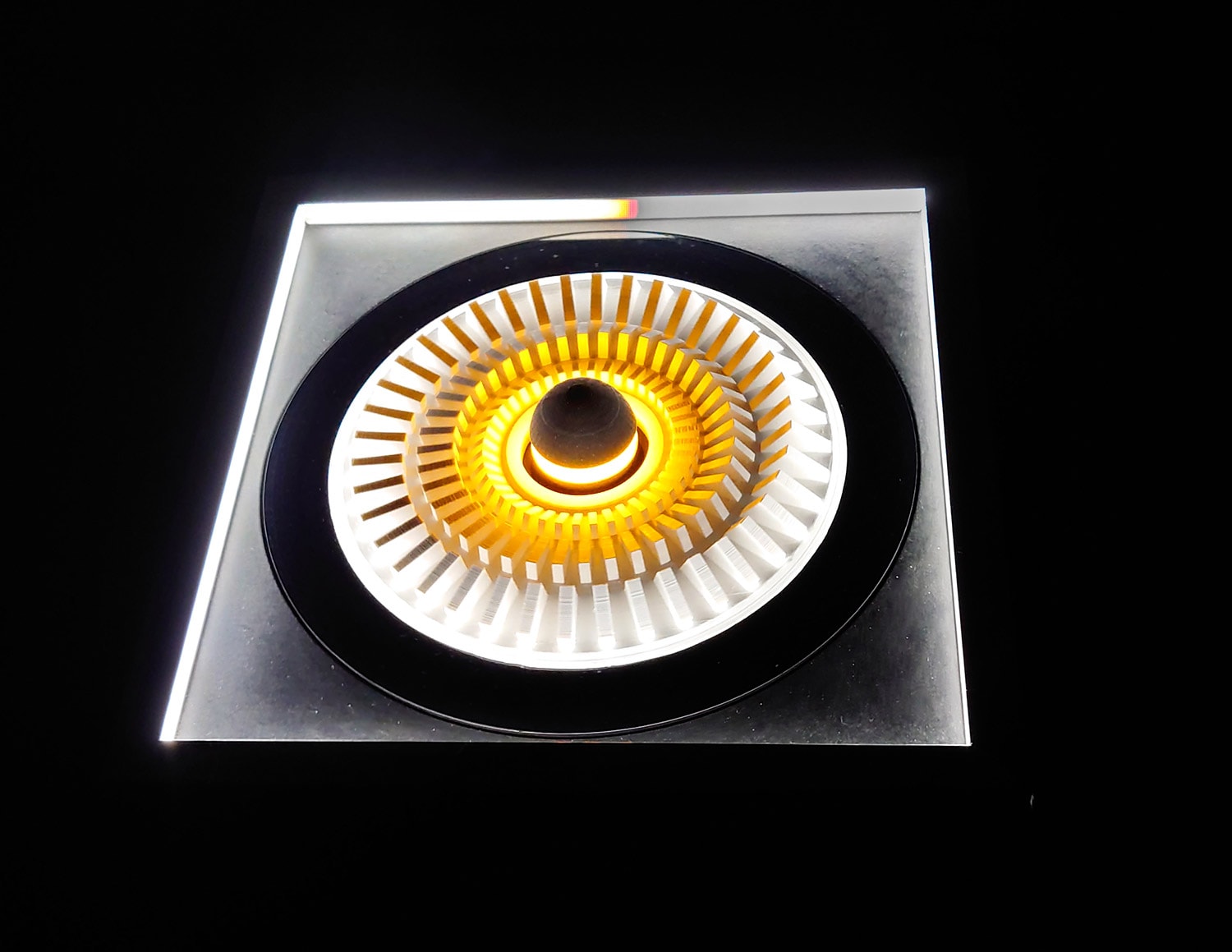
The main task of human perception is to understand sensory information and generate awareness of reality. Physical or chemical stimulation of the senses generates a totality of signals transmitted through the nervous system. However, the perception of the imagination is entirely independent of physical space. It forces our mind to recognize the pattern of the process through our real experiences and memory images. Due to its inertia, our eyes perceive still images arriving in rapid succession as a process of movement. Under the influence of environmental light factors, the reliability of our perception of reality soon becomes questionable.
Erik Mátrai
Aureole cone
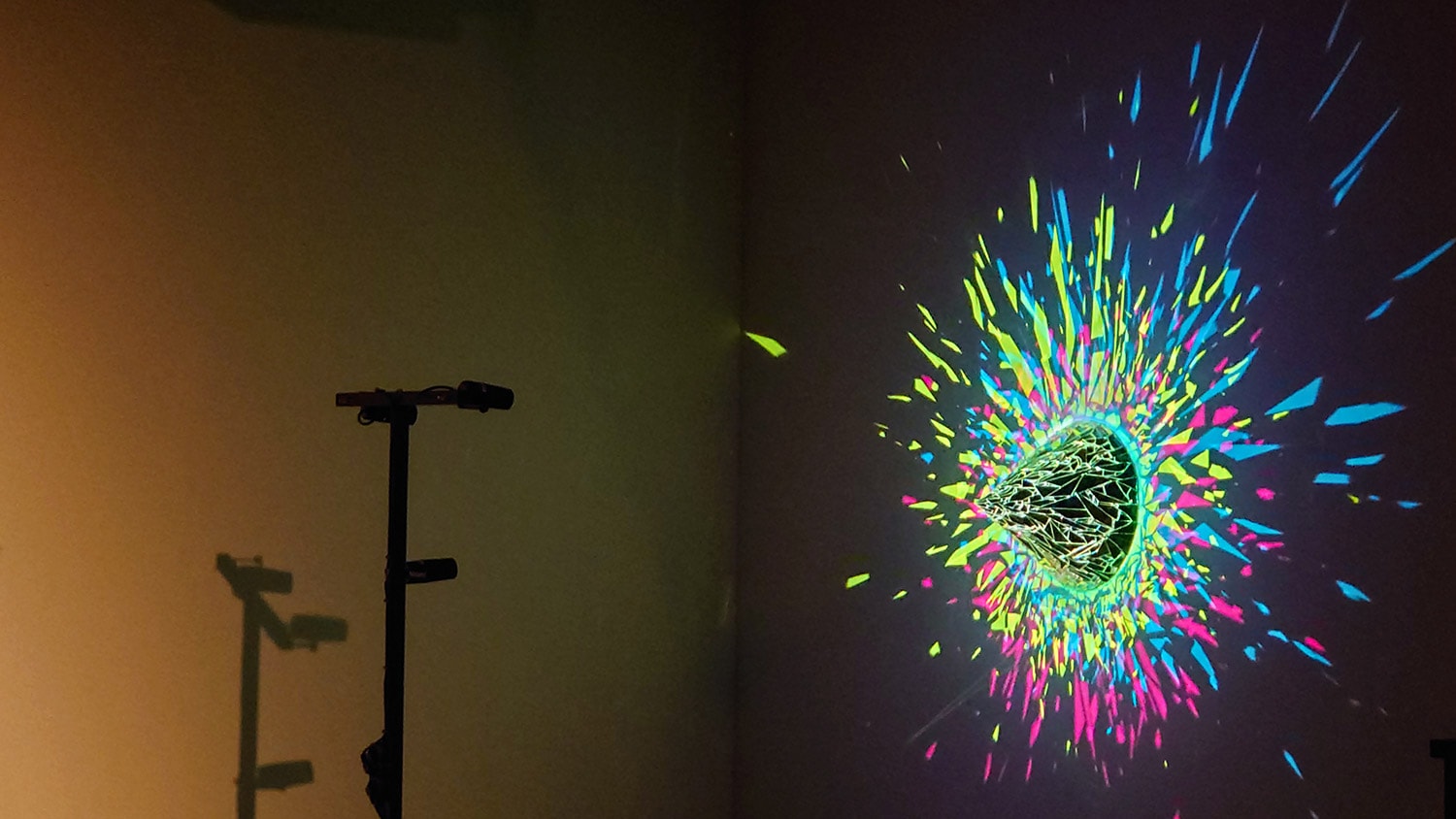
The object, consisting of pieces of mirrors, is illuminated by three coloured light sources. The light reflections create a special auratic field around the piece, a wreath of colorful light beams that come to life whenever passers-by and their shadows move past the object. The spots, where the three colors overlap become a united white light.
Gáspár BATTHA
Patterns of Harmony
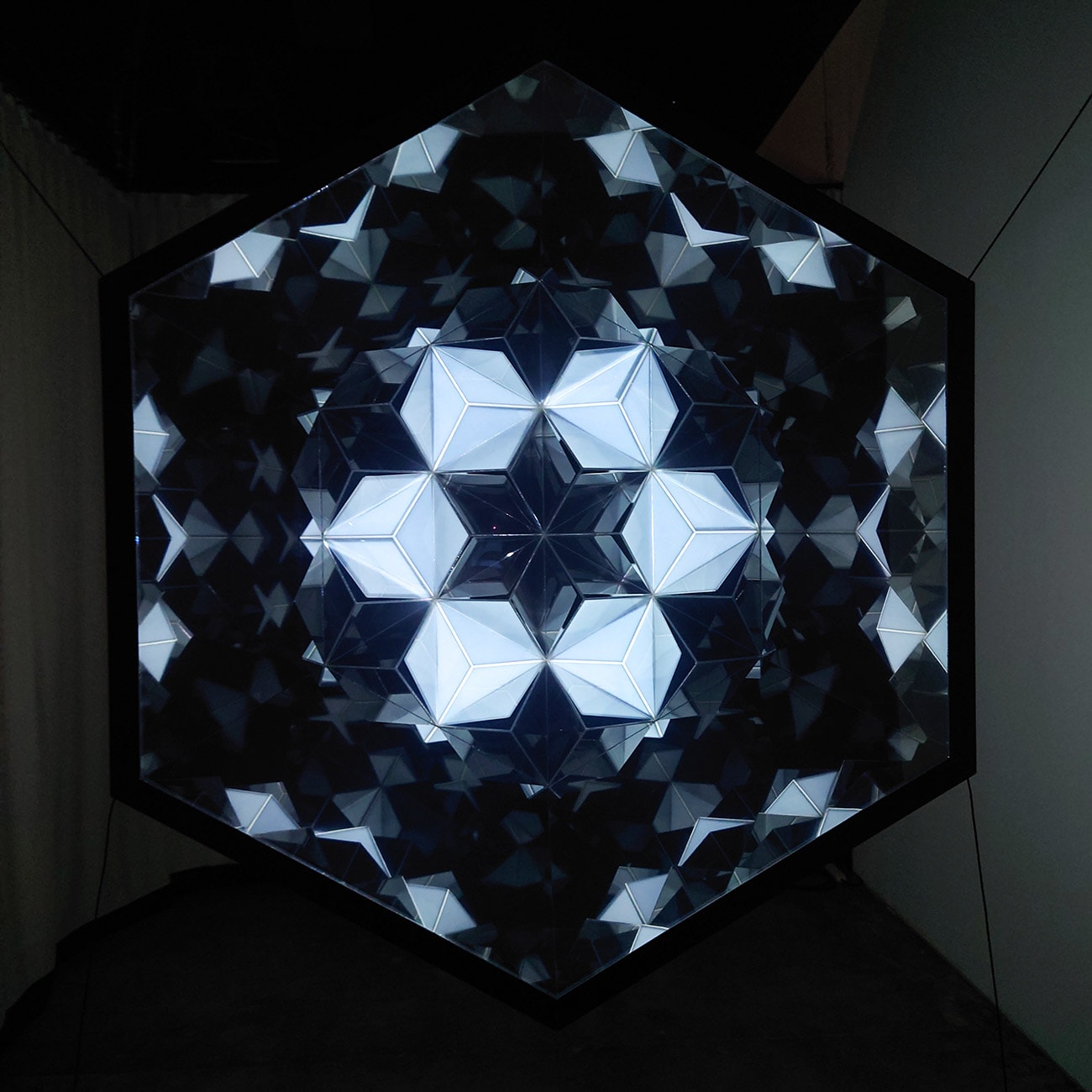
When we zoom in or out of nature, we find recurrent, familiar shapes such as spheres, triangles, pentagons, and all combinations of them. We use these shapes as conceptual tools to define reality, and can therefore consider them as building blocks of the universe. Does the way we perceive spaces and objects actually derive from the universe itself, or is it only an illusion produced by the human sensory system?
Patterns of Harmony seeks the answer to this question by taking a path along the elemental beauty of our nature, all the way to a place far beyond the perceptivity of the human mind: a mesmerizing experience as a fractal of illusions, light and reflections, showing you intriguing morphing shapes that are (not?) really there.
Csilla Szilágyi
Transfuse 03 Liquid
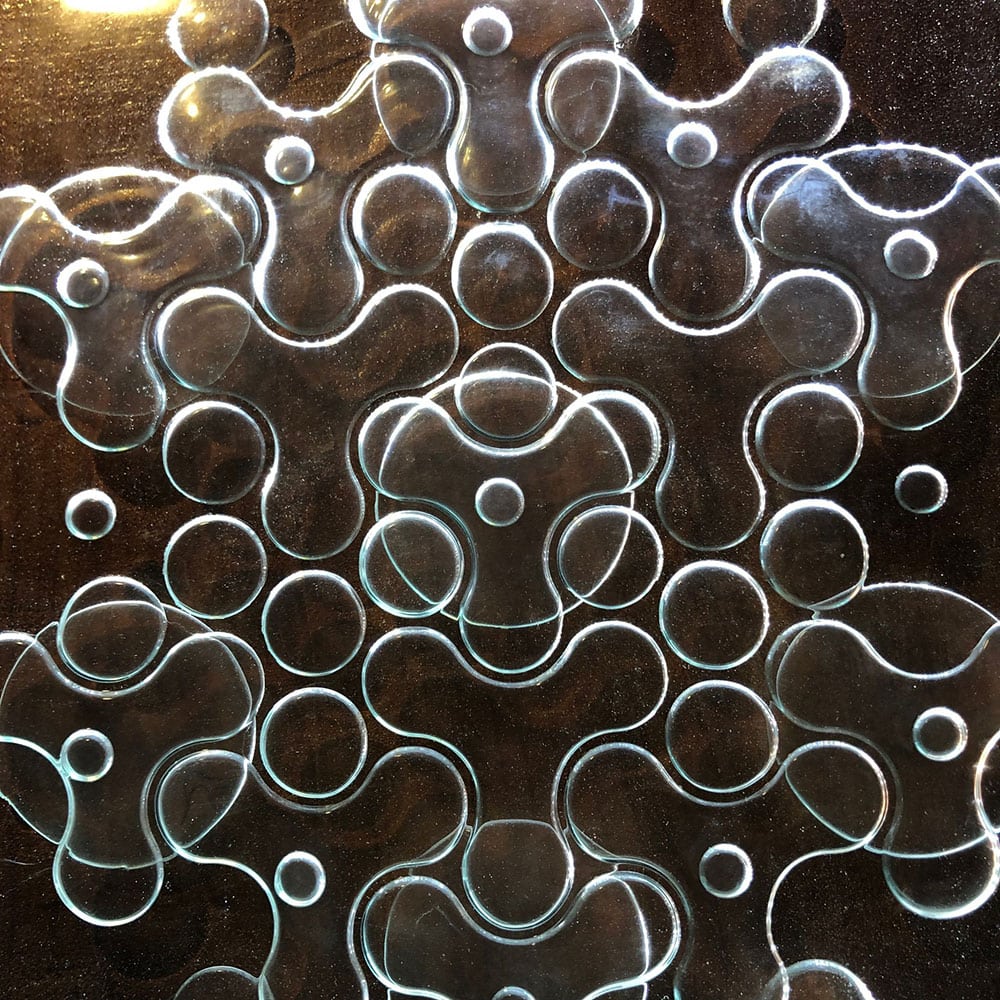
The glass-concrete sculpture entitled the Transfuse 03 Liquid is a section of the vessel beams of an imagined plant. With its central composition, it is shaped on the basis of the triangular grid structure. The juices and nutrients flowing in the plant fibers, and the carbon dioxyde bubbles, as discontinuities in the vessel beams, form the basis of the sculpture. When illuminated, the empty space enclosed between the layers of glass becomes visible and pulsates to the rhythm.
Ivó KOVÁCS
Omnispace
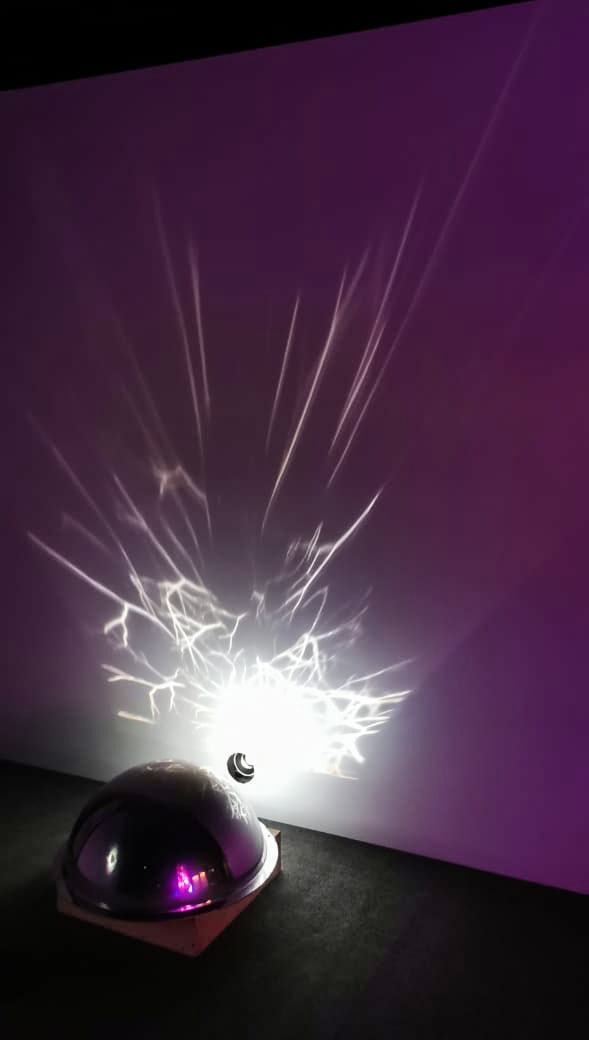
The light art installation “Omnispace” projects onto the wall with a hemispherical mirror. The title of the installation also refers to this single yet multidirectional light source. The artwork invites the viewer to lose themselves in a mesmerizing world of constantly changing light patterns as the distorted image is projected onto the wall of the exhibition space.
The video introduces the theme of the elemental instinctual world and explores our feelings, fears, desires and basic life processes that invisibly influence and distort our perception.
Malte KEBBEL
Fin Sin Fin
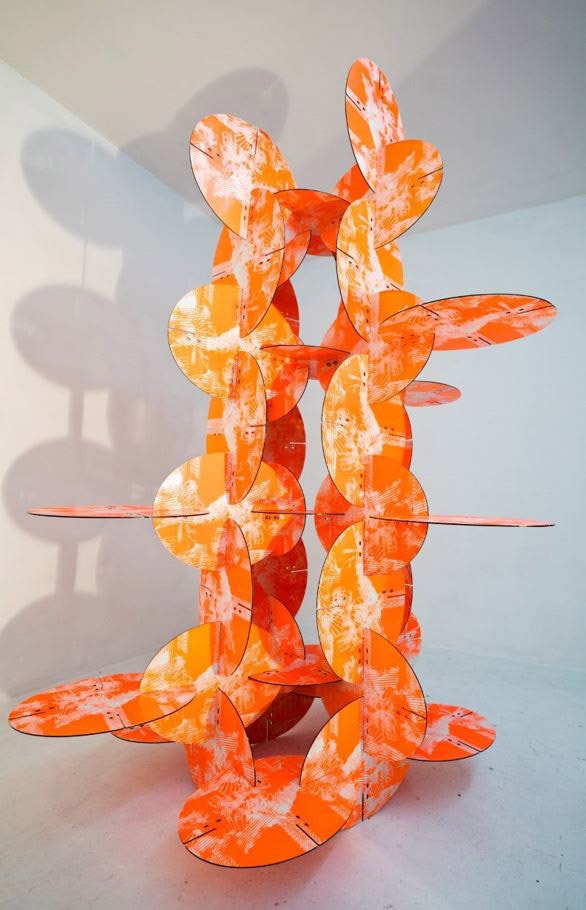
Malte Kebbel, founder of Studio Kebbel, is a German artist who creates large-scale light and sculpture installations for public spaces. Kebbel’s current work focuses on questioning our evolving relationship between urban space, light, nature and energy.
He uses lighting technologies, synthetic materials, parametric design and 3D technology to create monumental structures with geometric shapes and patterns reminiscent of nature. His installations are like temporary temples, shrines or places of contemplation that create grounding experiences of light and interventions in public spaces to give new meanings to urban space and create new connections.
FIN SIN FIN
Fin Sin Fin means “end without an end” in Spanish.
This installation is an illuminated 3D puzzle sculpture, composed of 40 uniform, oval aluminum composite panels assembled together with a plug-in system.
During the day, the installation’s light source is being powered by the Sunlight’s UV radiation, which makes the panels printed with phosphorescent and fluorescent colour, glow in the dark. During the night, the panels are also lit with artificial UV light, which brings an overall purple hue. The illuminated, rising structure evokes a sense of wonder. Visitors can write and paint on the installation with light using special laser pens.
Fin Sin Fin is a sustainable and adaptable installation. Due to the mechanism of each piece interchangeably fitting into each other, it could rise infinitely – hence its name – or even grow in a multitude of other directions. The possibilities of assembly are pretty much infinite, as long as the structure remains at a 90 degree angle.